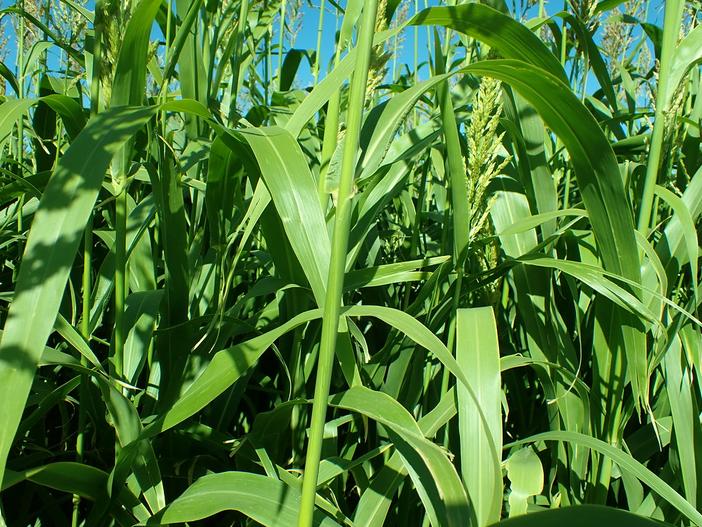Sorghum
(Sorghum bicolor)
Sorghum (Sorghum bicolor)
/
/

Matt Lavin
CC BY-SA 2.0










































































Estimated Native Range
Summary
Sorghum is highly valued for its adaptability to harsh environments, including a wide range of temperatures, high altitudes, and toxic soils. It has an exceptional ability to recover from drought, making it one of the most drought-resistant crops. The grain is used to make flatbreads and can be popped like popcorn, playing a vital role in the diets of many cultures in Asia and Africa. In cultivation, Sorghum requires full sun and can tolerate various soil drainage conditions, from fast to slow. It is not commonly grown for ornamental purposes but rather for its grain. However, it can also be used for fodder, biofuel, and brewing purposes. Care should be taken when growing Sorghum outside its native range, as it can become invasive in some regions.CC BY-SA 4.0
Plant Description
- Plant Type: Grass
- Height: 2-3 feet
- Width: 2-3 feet
- Growth Rate: Rapid
- Flower Color: N/A
- Flowering Season: Summer
- Leaf Retention:
Growth Requirements
- Sun: Full Sun
- Water: Medium
- Drainage: Fast, Medium, Slow
Common Uses
Bird Garden, Butterfly Garden, Deer Resistant, Drought Tolerant, Edible*Disclaimer: Easyscape's listed plant edibility is for informational use. Always verify the safety and proper identification of any plant before consumption., Erosion Control, Low Maintenance
Natural Habitat
Native to savannas and grasslands of the African Sahel
Other Names
Common Names: Broomcorn , Great Millet , Rhodesian Sudan Grass , Zweifarbige Mohrenhirse , Millet Grand , Sorgho Commun , Kafferkoren , 수수 , 蜀黍;高粱 , Black Amber
Scientific Names: Sorghum bicolor , Sorghum nigrum , Sorghum sorghum , Sorghum bicolor subsp. bicolor , Sorghum bicolor f. bicolor , Sorghum vulgare , Sorghum bicolor var. sudanense , Sorghum caudatum , Holcus sorghum , Sorghum vulgare var. durra
GBIF Accepted Name: Sorghum bicolor (L.) Moench